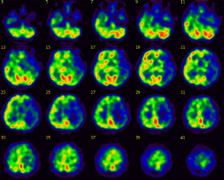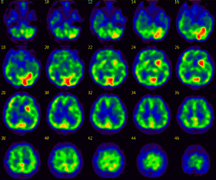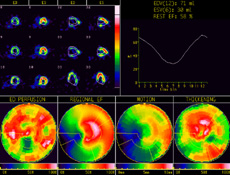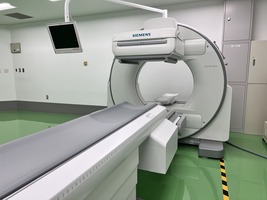Here's the text.
SPECT inspection
Last Updated August 2, 2023
Overview of Inspection
SPECT stands for Single Photon Emission Computed Tomography, which is translated as single photon emission tomography in Japanese.
The SPECT test is a test in which a drug containing a very small amount of radioactive material is administered to the body and the function of the organ based on the distribution of the drug.
This radioactive material is called Radio Isotope, which is sometimes referred to as RI inspection or isotope inspection due to its name.
In X-ray and CT tests, radiation that is irradiated by the device and transmitted through the human body is imaged, but in SPECT tests, radiation released outside the body is detected from radioactive drugs administered to the body and imaged.
Cerebrovascular SPECT test
Early treatment can help prevent cerebral infarction because cerebral blood flow decreases before cerebral infarction.
Statistical analysis of places and degrees of reduced cerebrovascular flow also helps diagnose dementia.

Cerebrovascular image before treatment
The brain on the left side is roughly displayed in green toward the screen, while the brain on the right side is shown in blue.
The blue indication indicates that the blood flow is decreasing.

Cerebrovascular image after treatment
If you do a test again after treatment, the blue part before treatment is displayed in green, indicating that the blood flow has recovered.
Cardiomyocardial blood flow SPECT test

Cardiomyocardial blood flow image
Similar to cerebrovascular blood flow, the blue part indicates a decrease in cardiomyocardial blood flow.
By imaging according to the beat of the heart, you can also see the degree of heart movement and the volume of the heart.
It is mainly useful for diagnosis of myocardial infarction and myocardial disease and determination of treatment policies.
Facilities of our hospital

Symbia Evo ( Excel
Made by Siemens Healthcare Co., Ltd.
It was introduced in March 2023.
Equipped with a high-sensitivity full digital detector, it is possible to obtain images with higher sensitivity and higher resolution than before.
In addition, the slim and open instrument design reduces pressure during inspection.
In addition to evaluating cerebral infarction, dementia, and myocardial blood flow, we also conduct tests that are useful for diagnosis of Parkinson's disease, epilepsy, tumors, inflammation, and lung embolization.
Inquiries to this page
Stroke and Neurospinal Center
Telephone: 045-753-2500 (Representative)
Telephone: 045-753-2500 (Representative)
Fax: 045-753-2894
Page ID: 817-308-368







